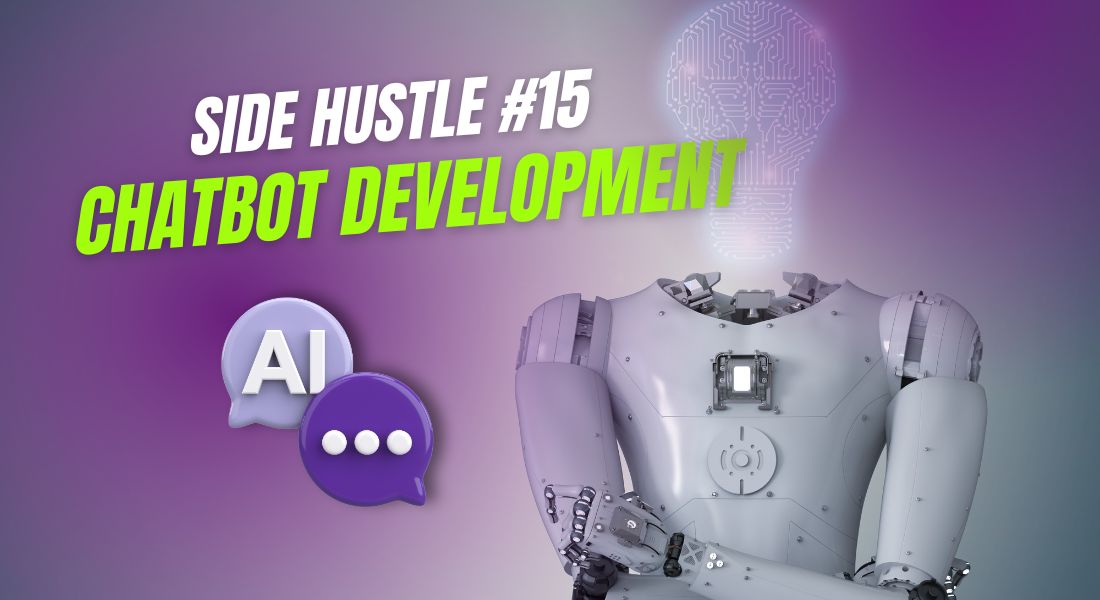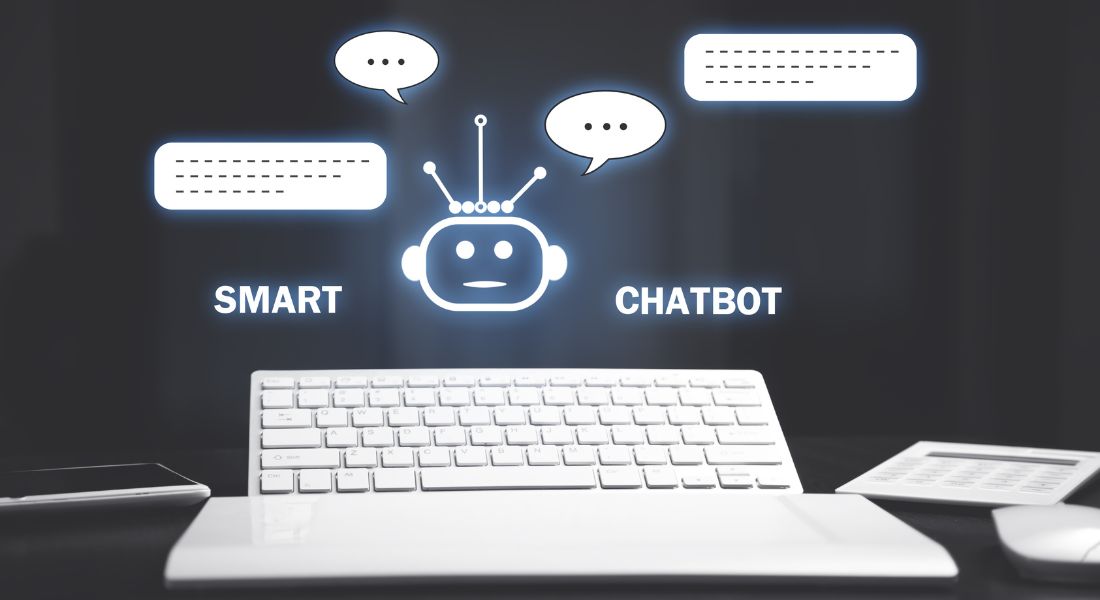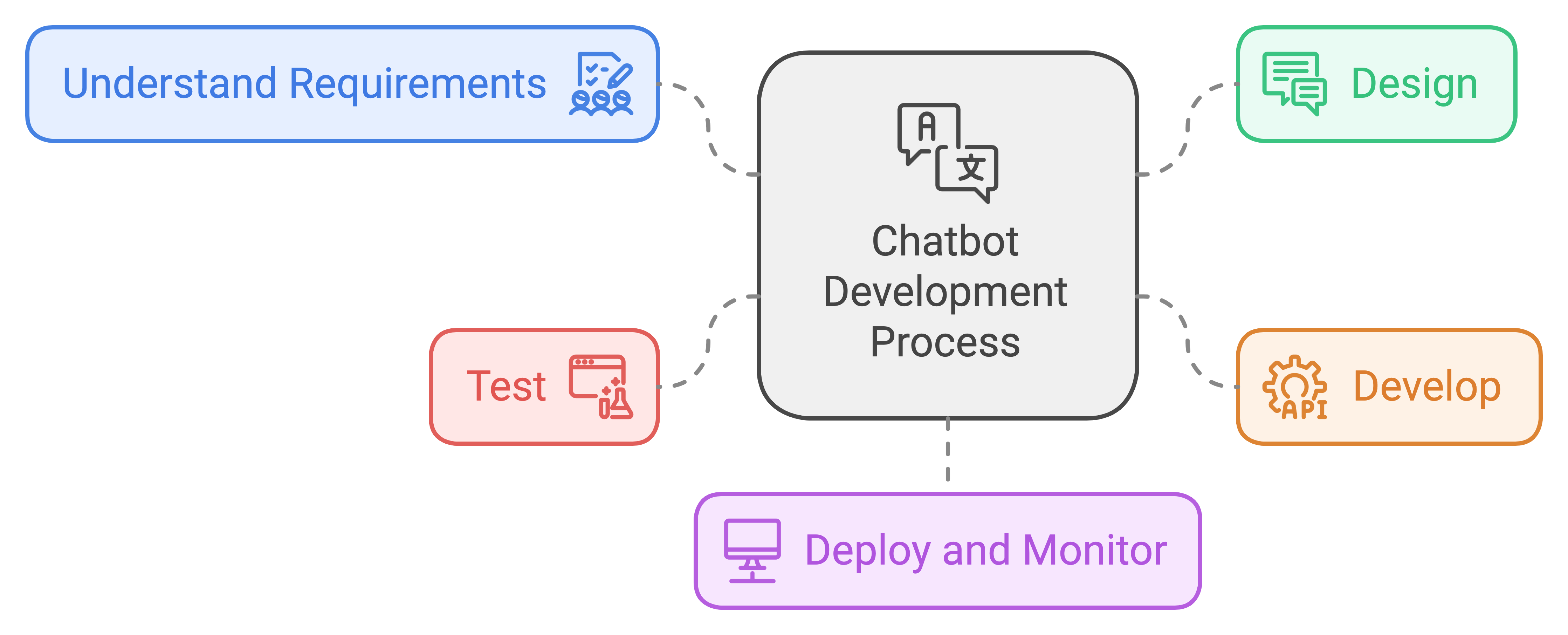🤖 Side Hustle #15: Chatbot Development
Published on October 17, 2024 Share

Businesses are searching for ways to improve customer experience and streamline operations in today's digital-first environment. Enter chatbots—smart, automated assistants that can handle everything from customer inquiries to product recommendations. With the increasing demand for these AI-powered assistants, starting a chatbot development side hustle could be your ticket to earning between $3,500 to $10,000 per month. Let’s dive into how you can capitalize on this growing trend.
Why Start a Chatbot Development Side Hustle?
Chatbot development is more than just writing code. It’s about designing intelligent systems that can engage users, solve problems, and create memorable experiences. But why is this a great side hustle to start?
- High Demand: With businesses embracing automation, the need for custom chatbots has skyrocketed. According to MarketsandMarkets, the chatbot market is projected to grow to $9.4 billion by 2024.
- Scalable Income: Chatbots can serve multiple industries, from e-commerce to healthcare. This means endless opportunities to diversify your client base and grow your income.
- Flexible Work: You can work remotely, choose your projects, and build a schedule that fits your lifestyle.

How Chatbot Development Works
Chatbots simulate human conversations, helping users interact with systems in a more intuitive way. As a chatbot developer, your task is to create these digital assistants, enabling businesses to automate various processes like customer support, order tracking, or even making personalized recommendations. Here’s a step-by-step breakdown of how chatbot development works:
Step 1: Understand the Client's Requirements
First, get to know the business and the purpose behind the chatbot. Is it for customer support? Sales? Or maybe an internal tool for employee engagement? Understanding the client's needs will shape the entire development process.
Example: A financial institution might need a chatbot that helps users check account balances, make payments, or provide financial advice. Your job is to ensure that the chatbot’s functionality aligns with the client’s goals.
Step 2: Design the Chatbot
Next, plan the chatbot’s conversational flow. Map out how the chatbot will interact with users, including what questions it will ask and how it will respond to various inputs. It’s crucial to design a natural, intuitive conversation that enhances user experience.
Example: You might create a chatbot for an online business that questions users about their preferences, makes product recommendations, and helps with order tracking while speaking in a human-sounding dialog.
Step 3: Develop and Program
After planning, it’s time to build. You can either use a chatbot development platform like Dialogflow or IBM Watson Assistant, or code the chatbot using languages like Python or Node.js. Ensure the bot can handle different scenarios and input variations for a seamless user experience.
Example: Using Dialogflow, you can create a chatbot that understands customer inquiries, such as “Where’s my order?” or “What’s the price of this product?” and provides relevant responses based on the data available.
Step 4: Test the Chatbot
Once the chatbot is built, testing is crucial. Run it through different scenarios to ensure it functions properly and addresses a variety of user requests. Testing helps you refine the chatbot and eliminate any bugs or confusing interactions.
Step 5: Deploy and Monitor
Finally, deploy the chatbot on the client’s website, app, or messaging platform. After deployment, continue to monitor its performance, gather user feedback, and make improvements as needed. A well-maintained chatbot will continue to deliver value to your client long after the initial setup.

Who Needs Chatbot Development Services?
Chatbot development services have a huge potential market. Since chatbots are frequently utilized in internal communications, sales, and customer support, companies in a variety of sectors might profit from your experience. These are some important industries that frequently use chatbots:
E-commerce Companies
Above all, e-commerce companies thrive on offering prompt, individualized service. Chatbots may streamline the shopping experience by helping customers with order tracking, product recommendations, and even return management.
Healthcare Providers
Healthcare organizations use chatbots to manage appointments, send medication reminders, and provide general health advice. These bots can help alleviate the load on human staff, improving efficiency while maintaining a high level of service.
Banks and Financial Institutions
Chatbots in banking offer an excellent solution for handling common customer inquiries, such as checking account balances, retrieving transaction history, or even providing financial advice.
Hospitality Services
From booking reservations to answering customer queries, chatbots can be invaluable in the hospitality sector. Hotels, airlines, and restaurants use chatbots to enhance customer service and provide timely assistance to travelers.

How to Generate Leads for Your Chatbot Development Side Hustle
Successfully generating leads for your chatbot development side hustle involves not just showcasing your technical skills, but also demonstrating your ability to solve real-world business challenges. To attract clients, you need to position yourself as an expert who understands both chatbot technology and customer service dynamics. Here are some proven methods to help you land clients:
Create a Portfolio Website
First, start by building a professional portfolio website that highlights your past work, skills, and client testimonials. Potential clients want to see what you can do, so make sure to showcase chatbot projects you’ve successfully developed. Additionally, explain how these projects helped businesses enhance their operations—whether that’s streamlining customer service, boosting sales, or automating routine tasks.
Example: A chatbot you developed for an e-commerce company might have reduced customer service wait times by 50%. Be sure to highlight these kinds of measurable results in your portfolio.
Start Blogging
Next, position yourself as an authority in chatbot development by regularly writing blog posts on topics like AI trends, automation, and customer experience. Blogging not only improves your visibility on search engines but also helps potential clients see you as a knowledgeable expert. Share insights into how businesses can leverage chatbots to improve their operations, and include case studies or examples of how your solutions have helped businesses.
Pro Tip: Write a blog post on “5 Ways Chatbots Can Transform Customer Support” and explain how your chatbot solutions can drive efficiency, improve engagement, and save costs for businesses. Not only will this build credibility, but it’ll also attract inbound leads.
Leverage Social Media
Social media sites are an excellent means of showcasing your work and establishing connections with possible customers. Use platforms like LinkedIn, GitHub, and Twitter to share success stories, chatbot demos, and thought leadership content. Engage with AI development communities and participate in discussions to establish your expertise. Social proof is key—when you share a chatbot demo or project that significantly improved a client’s business, it can attract the attention of companies looking for similar solutions.
Example: You could post a video demo of a chatbot that assists customers in booking flights for a travel agency, explaining how the bot increased customer satisfaction and reduced booking errors.
Join Freelance Platforms
Freelance platforms like Upwork and Toptal provide an excellent way to connect with clients globally. Many businesses actively search these platforms for experienced chatbot developers to create custom solutions. Build a comprehensive profile, showcasing your skills, past projects, and client feedback. Regularly applying to relevant gigs on these platforms can support you secure a steady stream of clients.
Example: By joining Upwork, you could land projects ranging from creating customer service bots for small businesses to developing advanced conversational AI for large corporations.
Attend Networking Events
Finally, don’t underestimate the power of in-person connections. Attend AI conferences, tech meetups, and industry-specific events to meet potential clients face-to-face. These events offer opportunities to connect with business owners who are interested in chatbot solutions but may not know where to start. In addition to fostering relationships, networking enables you to immediately demonstrate your knowledge, which frequently leads to more profitable contracts and quicker lead creation.
Pro Tip: Bring a demo chatbot to these events to show attendees how it works in real-time. For example, if you're at a healthcare tech conference, showcase a chatbot that helps patients book appointments or access health information.
How to Fulfill Chatbot Development Services
Delivering high-quality chatbot development services requires both technical and creative skills. Follow these following steps to ensure smooth and successful service delivery:
- Understand the Requirements: Begin by thoroughly discussing the chatbot’s purpose and functions with your client. What problem is it solving, and who is the target audience?
- Design the Chatbot: Plan the chatbot’s conversational flow to ensure it feels natural and intuitive.
- Develop the Chatbot: Use a development platform or program the chatbot from scratch using languages like Python or Node.js.
- Test: Run the chatbot through various scenarios to test for accuracy and effectiveness.
- Deploy and Monitor: After it is implemented, keep an eye on the chatbot's performance and adjust as needed in response to user input.

Best AI Tools for Chatbot Development
Building a chatbot from scratch can seem overwhelming, but with the right AI tools, you can simplify the process and create high-quality, functional bots that meet your clients’ needs. Here are some of the top AI tools you can use to streamline your chatbot development side hustle:
1. Dialogflow
Key Feature: Dialogflow, developed by Google, is one of the most comprehensive development suites for creating conversational interfaces. It integrates seamlessly with platforms like websites, apps, and messaging services. With natural language understanding (NLU), it enables your chatbot to interpret complex customer queries and provide accurate responses.
How It Helps: Dialogflow is perfect for creating chatbots that can manage a variety of consumer interactions, such as processing orders and responding to frequently asked questions. You can easily design and test bots thanks to its user-friendly interface, which also enables rapid prototyping.
Example: If you're developing a customer service chatbot for an online retail business, Dialogflow can be used to integrate the bot into the website, helping customers track orders or get product recommendations in real-time.
2. IBM Watson Assistant
Key Feature: IBM Watson Assistant is a powerful tool designed for building sophisticated chatbots capable of handling complex queries and providing personalized user experiences. Its AI engine understands natural language inputs, allowing for more human-like interactions. Plus, it comes with pre-built industry templates, which can accelerate your development process.
How It Helps: Watson Assistant is particularly useful for industries that require a high level of detail and personalization, such as healthcare or finance. Its AI capabilities enable you to create bots that can manage detailed inquiries and deliver nuanced responses based on context.
Example: For a financial institution looking to implement a chatbot, IBM Watson Assistant could be used to create a bot that helps users manage their accounts, check balances, and even receive tailored financial advice based on their transaction history.
3. Botpress
Key Feature: Botpress is an open-source chatbot development platform that offers flexibility, a user-friendly interface, and powerful customization options. Whether you're an experienced developer or new to chatbot creation, Botpress gives you the tools to create feature-rich bots with ease.
How It Helps: With its open-source nature, Botpress is great for developers who want full control over their chatbot’s customization. It’s highly flexible, enabling you to build bots for customer support, HR, sales, or even internal business operations.
Example: Suppose you're tasked with developing a bot for an HR department. Using Botpress, you could create an internal chatbot that assists employees with common HR-related questions, like leave policies or benefits, streamlining HR operations and reducing manual tasks.
4. Botsify
Key Feature: Botsify offers an easy-to-use platform with drag-and-drop templates for chatbot creation. It’s perfect for non-developers or businesses that need a simple solution for creating customer service or educational bots. Its templates make it quick to get started, and it integrates well with popular messaging platforms like Facebook Messenger.
How It Helps: If your client needs a chatbot without complex functionality, Botsify is a great choice. Its templates are designed for common use cases, so you can focus on customizing the experience without worrying about technical coding.
Example: A school might use Botsify to develop a bot that helps students find information about courses, schedules, and events. The bot could answer FAQs and even help students register for classes through Facebook Messenger.
5. Microsoft Bot Framework
Key Feature: Microsoft Bot Framework provides developers with a comprehensive framework to build, test, and deploy chatbots across multiple channels. Its robust features and tools allow you to create enterprise-grade bots capable of handling a variety of tasks, from simple Q&A to more complex workflows.
How It Helps: Microsoft Bot Framework is ideal for developers building large-scale chatbot solutions. It integrates with numerous services, including Microsoft Azure, to create scalable and secure bots. It’s also compatible with a wide array of communication channels like Microsoft Teams, Slack, and Facebook Messenger.
Example: For a corporate client needing a customer support chatbot, Microsoft Bot Framework can be used to build a bot that handles everything from basic customer inquiries to troubleshooting and escalating issues to live agents.
6. Chatfuel
Key Feature: Chatfuel is a popular tool for building chatbots specifically for Facebook Messenger, making it a go-to for e-commerce businesses and customer support teams. It requires no coding experience, so even beginners can create functional bots using the drag-and-drop interface.
How It Helps: Chatfuel is perfect for businesses that want to automate Facebook Messenger interactions. Its simplicity allows you to develop bots quickly, whether they are for answering customer inquiries, processing orders, or offering personalized recommendations.
Example: An e-commerce store might use Chatfuel to build a bot that helps customers browse products, track their orders, or receive personalized product recommendations based on previous purchases—all within Facebook Messenger.
Pro Tip: Choose your tools based on the specific needs of your client. For quick, templated bots, platforms like Botsify and Chatfuel work well. For more complex, customizable solutions, Dialogflow and IBM Watson Assistant are ideal.You can expedite development and guarantee that the chatbot successfully satisfies the client's objectives by utilizing the appropriate technologies.
Conclusion
The demand for chatbots is growing across industries, making chatbot development a highly lucrative side hustle. By leveraging your technical skills and using powerful AI tools, you can create chatbots that improve customer experiences and streamline business operations. Whether you're working with e-commerce giants or healthcare providers, this side hustle offers both creative satisfaction and financial rewards.
Want to explore more AI-powered side hustles? Check out our AI Side Hustle Guides for more inspiration!




